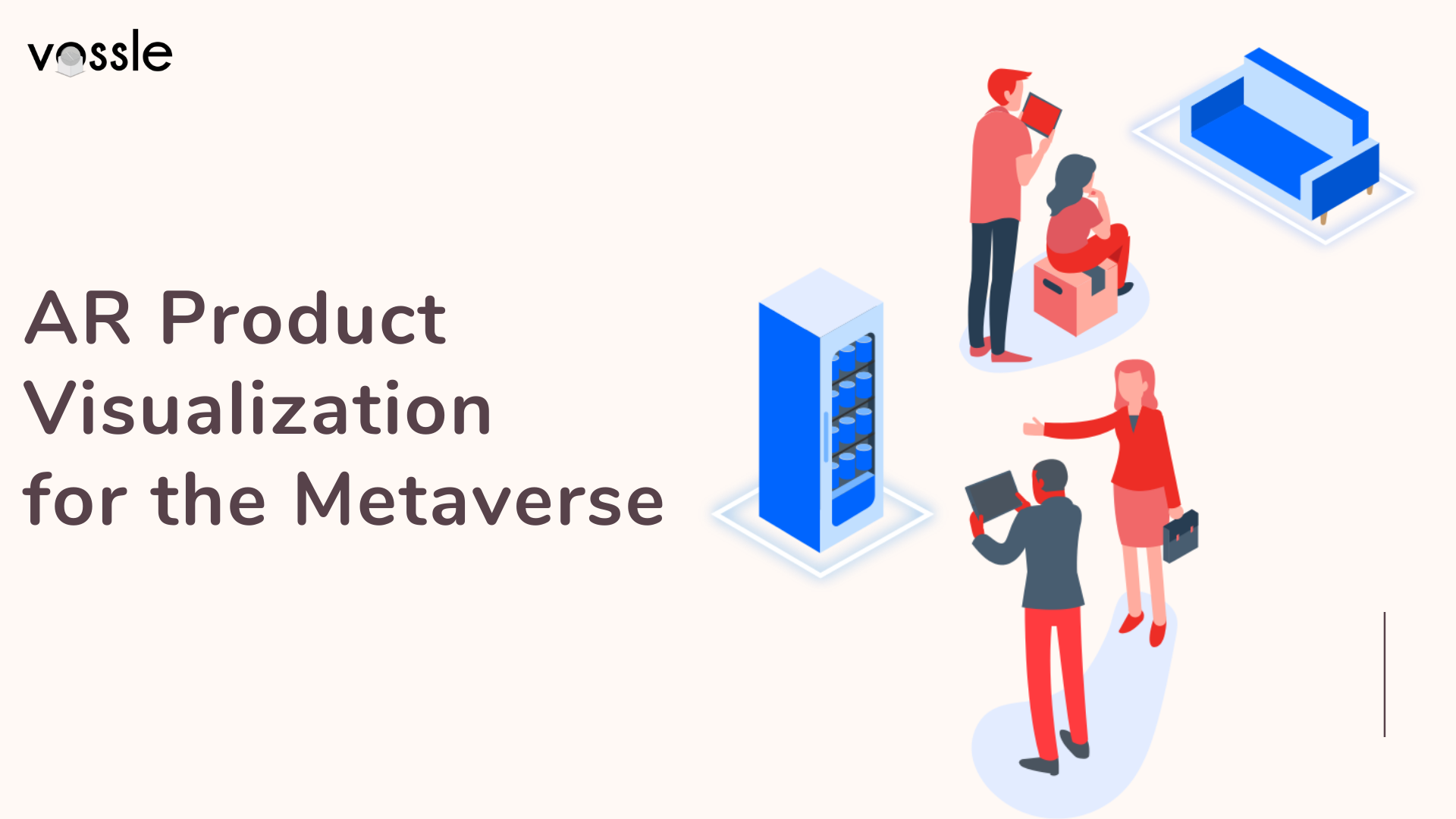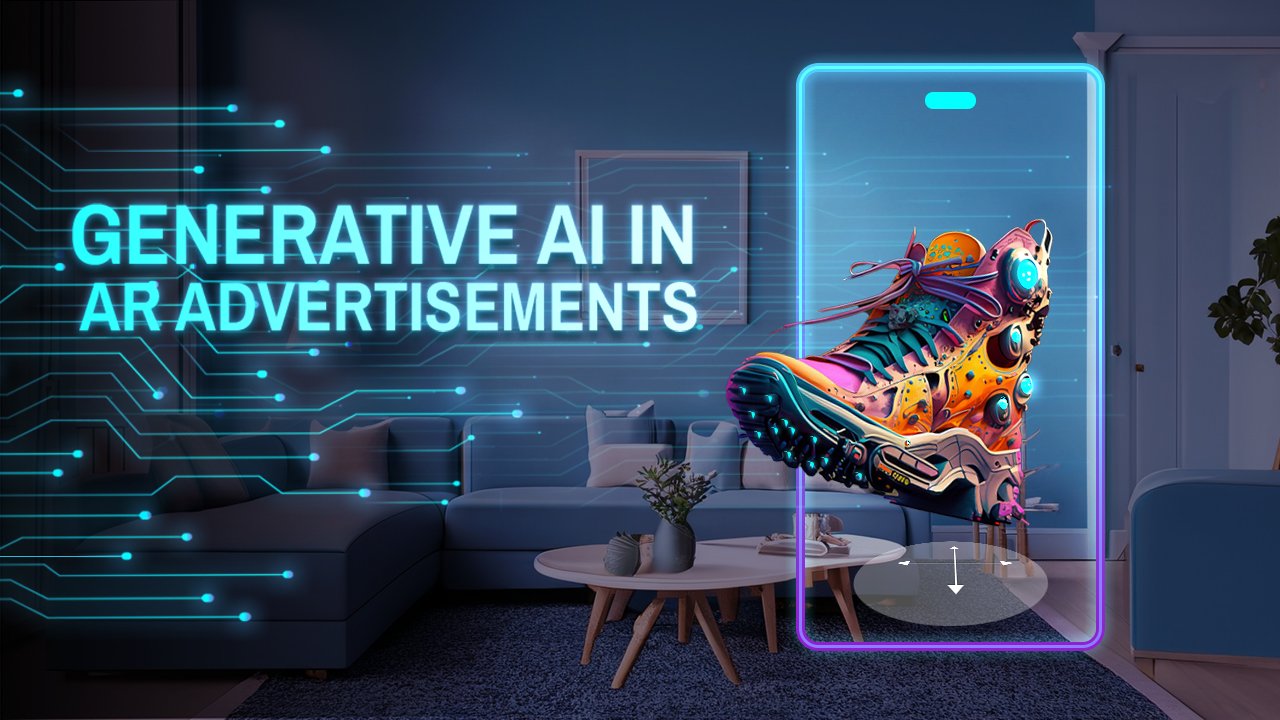Positive customer experience is very important for merchandisers, whether operating from a physical locale or an eCommerce platform. For online endeavors, creating modern and exhilarating immersive experiences is how you attract new clients, and augmented reality (AR) based product visualisation is one of the best tech solutions towards the transition of online shopping.
Thereupon nearly seven years, researchers anticipate the AR industry to prosper exponentially, from a sheer $6.12 billion in 2021, the Augmented Reality market will reach about $100 billion by 2028 at a compound annual growth rate of approximately 50% every year.
Stimulated by advancements in technologies like 5G, rising demand for eCommerce service channels, and changing buyer behavior, AR product visualisation is one interesting tool every firm should be considering. These experiences enable businesses to customize marketing offers, and many big-name sellers are rolling out their adaptations of Augmented Reality technology.
What is AR Product Visualization?
Augmented reality solutions allow projecting realistic 3-Dimensional (3D) models of items onto real settings with the help of smartphones or head-mounted displays.
Nowadays, Augmented Reality finds use in many areas from logistics to public safety and medical training. So it does in eCommerce and online customers like it a lot.
61% of consumers say that they would rather purchase in web marts with augmented reality solutions than in those without them.
Online retailers use augmented reality in their companies in various ways. Many of them provide shopping applications that offer an in-home experience so that the clients could see if the curtains would look good in their bedroom or if the new furniture fits their interior. Others offer apps that let customers virtually try outfits on by using their smartphone front camera and these are only some examples of how Augmented Reality product visualisation can help product brands engage clients. Augmented Reality product visualisation technology has so much else to offer!
So, how exactly does this particular technology reshape the future of the entire eCommerce arena?
In this post, we will cover everything you should know about product visualisation using augmented reality, including some of the latest examples used in the industry today.
Advantages of Using AR for Product Visualisation
One of the best-augmented reality app executions was the Pokémon Go mobile game. It had players searching for virtual Pokémon eggs around the Earth. This demonstrates what possibilities Augmented Reality had to offer for delivering immersive experiences across web channels.
In eCommerce, augmented reality solutions are opening up new vistas for companies that want to push the barriers of what’s possible when designing exceptional user experiences. The biggest benefit available from AR product visualisation for eCommerce organizations is reinforcing engagement with your consumers. When asking consumers what they think AR will do for eCommerce, the feedback is staggering:
More than half of buyers feel merchandisers aren’t using the technology to its full potential. When purchasing stuff, 61% of clients like to utilize Augmented Reality while 63% think it will change their shopping experience totally.
The study also implies that 70% of clients will be more devoted to brands that invest in AR product visualisation technology to improve the buying journey.
A variety of different businesses are already benefiting from Augmented Reality systems, encompassing the manufacturing and logistics sectors.
Here are just some of the ways how a rising number of companies are using visualisation technology to achieve market success:
3D Product Images
With amazing 3D visualization of a specific product, you won’t have to settle for 2 dimensional photos demonstrating limited perspectives of the item to gain a better understanding of its shape and structure. Rather, you can freely decide which part of the commodity you want to see. The added interactive experience will give customers a much easier time comparing articles and, eventually, more confidence in online shopping.
Currently, creating 3 Dimensional images of small products can easily be made possible with a device such as Form 3D Desktop Scanner and Matter.
VR Websites
The giant e-commerce platforms like Amazon, Shopify, Flipkart and eBay are said to be looking into using Virtual Reality in online retail as well as WebVR technology. They are doing this for the advancement of high-tech websites that can be optimised for VR helmets and glasses. We can just visualise how much more immersive websites can be when VR is used for website navigation or for providing a more in-depth yet rational demonstration of what the brand has to offer to its buyers globally.
AR catalogue
This app enables potential customers to visualise how various types of furniture would fit and look in their residences, using only a photo of their inner living space. Converse has boosted their sales further after letting clients “try on” sneakers by pointing their smartphone camera (with the AR-enabled Sampler app) towards the foot.
Augmented reality technology is one of the best ways that retailers can widen their audience, engage their clients, and help them have a more outstanding and incredible shopping experience.
It Helps Ecommerce Brands Sell More
AR product visualisation technology is vital for the success of any eCommerce business. It can help manufacturers increase sales and outrun their opponents which is relatively difficult to achieve in the eCommerce industry in the prevailing realities. The Internet retail sector is growing by 23% year-to-year and 95% of all investments by 2040 will be made online. Therefore, the competition in eCommerce is elevated. It compels the retailers to search for powerful tools that can help stimulate and sell goods in new ingenious ways and that’s where AR product visualisation comes in handy.
AR visualisation opens opportunities for engaging customers with gamification techniques
Customer engagement is one of the reasons for e-commerce growing success. Marketers create more and more fresh ways to fascinate customers. The idea of gamification has been very helpful on this path and with the advent of Augmented Reality worldwide, brands got a chance to turn buyers’ shopping experience into an interesting game.
AR product visualisation helps product brands lessen returns
By enabling the buyers to comprehend a product better, Augmented Reality helps web stores not only boost the shoppers’ confidence about investing but also get more sales. It also helps in lessening the returns of goods. That is because Augmented Reality empowers customers with an accurate and practical visualisation of products they will get before the investment is delivered to their door.
This eradicates the rift between a customer’s expectations and reality. As a result, they feel satisfied with the purchase and have no intention to return it to the store. This way, Augmented Reality product visualisation plays into the hands of both consumers and eCommerce brands, guaranteeing higher client satisfaction and lower return rates.
AR opens new opportunities for customization of goods
The shoppers in the contemporary era have high expectations of their shopping experiences. They want to have an opportunity to personalise and purchase identity-driven products. Therefore, if a retailer wishes to stay competitive, they should think of enabling customers to design items to their liking and AR product visualisation is a wonderful tool for that.
AR simplifies decision-making by describing the products suitably
Augmented reality solutions can help with accomplishing this goal. AR product visualisation can elucidate an item’s characteristics and eradicate doubts about purchasing it. You might be wondering, how so? The secret is that Augment Reality solutions allow potential customers to see a product as a part of their life before investing.
AR product visualisation makes online shopping as effective as offline
Clients love brick-and-mortar shops for their neatly organised shelves, modern showrooms, and lots of options in front of one’s eyes. However, offline shopping also has drawbacks: it takes a lot of time and struggle to get to the place, to walk between shelves, and to wait in a long line of other shoppers.
AR product visualisation technology gives the solution to these problems. It enables the buyers to relish the advantages of brick-and-mortar stores without a single step outside their house. People just have to use a particular smartphone Augmented Reality application that projects virtual shelves with goods right on the walls in a customer’s room. This way, they can explore the variety of an eCommerce brand, know about the products, and buy by clicking on them.
The power of the internet and the profound technological modifications we’ve seen over the past decade has completely revolutionised consumerism. Amazing technologies like Virtual Reality, Augmented Reality, 3D Product Visualisation, and 3D Product Rendering have opened up a realm of opportunities improving the client experience and saving expenses for the adapting businesses.
3D product visualisation opens the door to enthralling opportunities like custom-made products. Providing options for the customer to specifically design their product boosts brand loyalty and conversions while decreasing product return rates.
Vossle is one of the best development platforms for web-based reality content (WebAR). It delivers a comprehensive solution to create, publish and distribute WebAR content. Vossle enables you to develop a rich AR experience using market-based, markerless & try-on technology. It enables you to execute a variety of augmented reality solutions for better customer engagement and satisfaction.
Are you ready to get started with WebAR? Vossle is the most trustworthy ally of enterprises looking to implement new technologies.



















